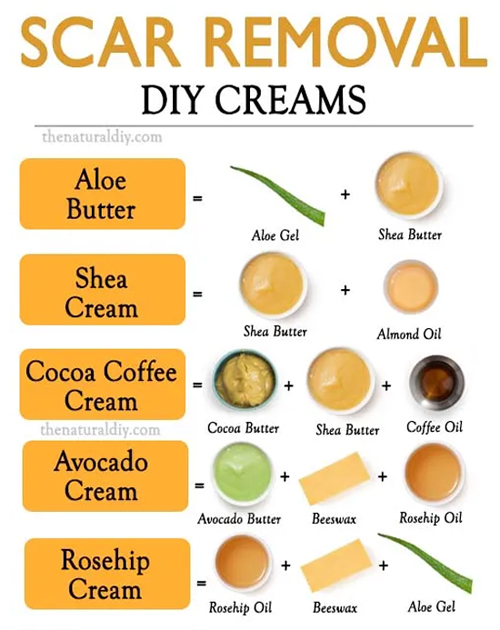
Children show scars like medals. Lovers use scars as secrets to reveal. A scar is what happens when the word is made flesh. – Leonard Cohen.
Newborn skin is flawless and like a fine piece of silk: it is strong but delicate. Unfortunately any trauma such as a burn, cut or a result of surgery can cause the formation of unattractive scar tissue. So what are scars, why do they form and how can we erase them? Scars are areas of fibrous tissue that replaces normal skin after a wound. They form as part of the normal biological process to repair the skin. Scar tissue is less resistant to ultraviolet light than regular skin and sweat glands and hair follicles do not grow back.
Most skin scars are flat and pale, leaving an outline of the original wound. They form differently depending on the area of the injury, age and skin-colour of the person who was injured. A wound that is superficial – in the epidermis – will heal nicely, often not even leaving a scar at all. The dermis (the deeper layer of the skin) however, heals with a lot of collagen fibres, which form haphazardly rather than in nice parallel sheets. The worse the damage is, the worse the scar will be.
So the question many people ask is: are all scars the same? The answer to that question is an emphatic “No”. There are multiple kinds of scars. Some are as minimal as a slight noticeable change in the colour of pigment, either white spots or dark spots. Others are bulbous, growing bigger than the original wound itself.
There two main types of scars that result from an overproduction of collagen, a kind of over-healing if you will. Hypertrophic scars form a red raised lump above the surrounding skin, but do not grow beyond the boundaries of the original wound. They often improve in appearance and eventually flatten out after a few years.
Keloid scars are more serious because they can carry on growing indefinitely. The surface grows much bigger than the scar itself. They can occur on anyone, but are more common in dark-skinned people because darker skin contains more collagen. Generally Caucasians heal with less scarring but darker skins heal better.
Other scars may include atrophic scars, which are a depression of the skin or a sunken recess. Atrophic scars occur when there has been a loss of tissue, fat or muscle at the site of the scar. These are caused commonly by acne and chickenpox, but can also result from surgery or accident. Pigment scars or post-inflammatory hyper-pigmentation is where melanin determines the colour of skin: the more melanin, the darker the skin. When skin cells containing melanin are damaged or over-stimulated the cells may begin to produce too much or too little melanin. Common causes are scratches, burns, cuts, bruises, acne, allergic reactions and sun damage.

Stretch marks are a form of scarring called Striae. It is caused by rapid growth due to pregnancy, weight gain, extreme weight loss or rapid growth in adolescence. The dermis breaks down when stretched, leaving reddish or purplish streaks that fade to skin colour.
So let’s look at the possible treatments available today for the removal of scars. These treatments ultimately depend on the type of scar. For pigmentation, laser treatments are most common. If pigmentation is heavy we use Yag laser, if it is light we can use IPL and if is very light we can use cream. In the case of birthmarks or so called ‘cafe-o-laite’ spots the Yag laser is used to diminish the pigment. For moles we use a combination of CO2 and Yag laser depending on how deep the pigment is.
For stretch marks, there are a few treatment options that can help such as dermabrasion, chemical peels or laser resurfacing. I have found the combination of carboxytherapy to stimulate the underlying collagen and laser to even out the surface skin tissue is very effective.
In an inexpensive process for the treatment of atrophic scare is needling, where the scarred area is continuously needled to soften depressed scars and deep lines and promote collagen formation. Once needled, the area is allowed to fully heal and needled again if required.
Microdermabrasion is a gentle exfoliation and gradual healing process for raised or hypertrophic scars. It does not require anesthetic or down time.
Fraxel Laser Resurfacing is effective for small scars but must be done multiple times. If quick results are desired the CO2 laser is useful, but requires more down time.
Cortisone is injected into the affected area of keloid scars to melt the excess collagen and thin out the scar tissue. Very little is absorbed into the blood stream so side effects of this treatment are minimal. Little and often is the best approach because too much will result in a sunken appearance. Laser surgery to eradicate the blood vessel underneath that feed into the scar.
In order to hasten the wound healing process after any treatments, including laser, I recommend high doses of vitamins E, C and zinc. Stable forms of topical vitamin C have been shown to improve collagen formation and topical creams like vitamin E or rose hip oil can help with healing. Vitamin A cream helps atrophic scars by stimulate more collagen and filling in the indented area.
A scar is a sign of a life well lived, but you don’t have to let it show!
Image courtesy thenaturualdiy.com.
Source: Dr. Nantapat Supapannachart – American Board Certified Dermatologist and Owner and Founder of Apex Profound Beauty.


